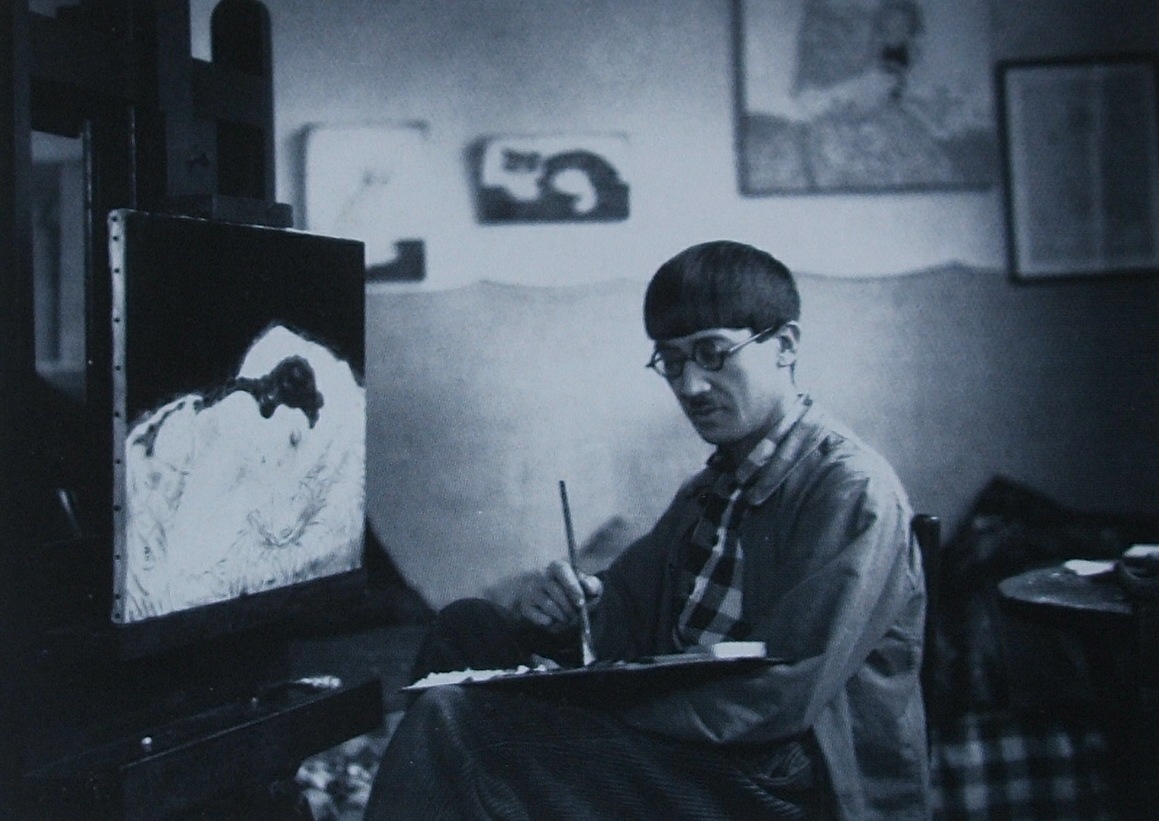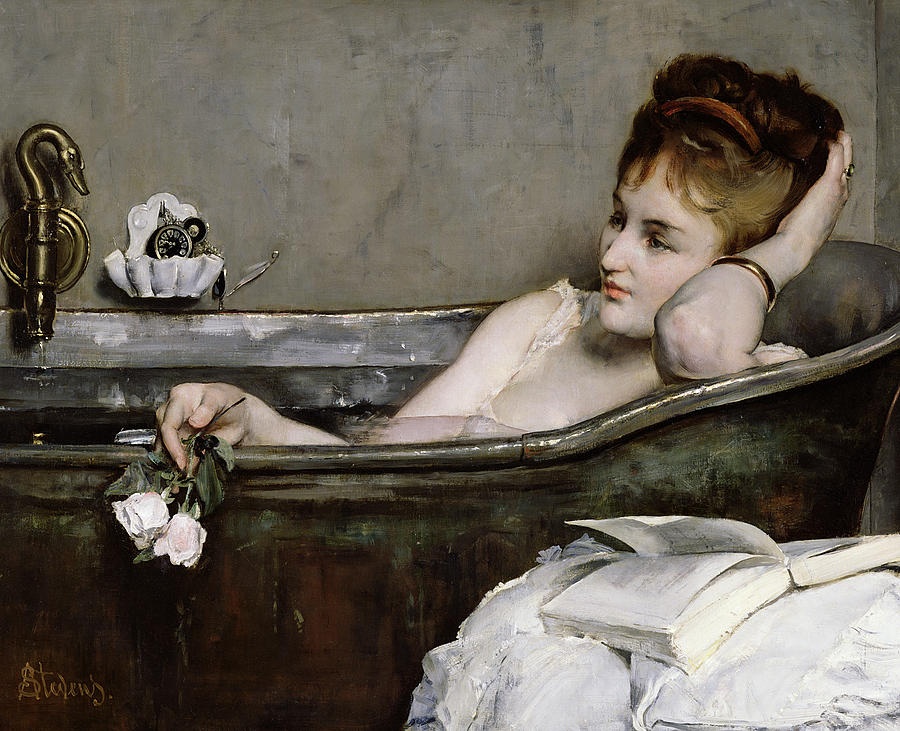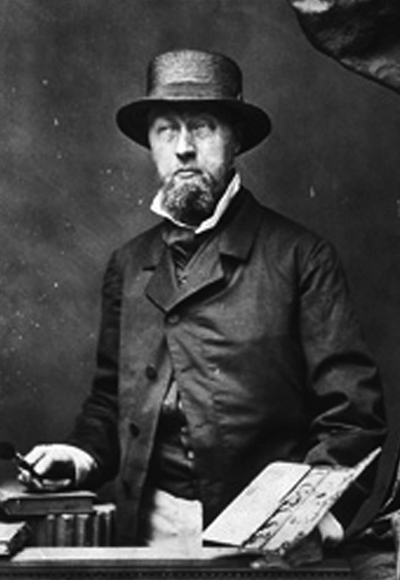|
Musée Carnavalet
The Musée Carnavalet in Paris is dedicated to the history of the city. The museum occupies two neighboring mansions: the Hôtel Carnavalet and the former Hôtel Le Peletier de Saint Fargeau. On the advice of Baron Haussmann, the civil servant who transformed Paris in the latter half of the 19th century, the Hôtel Carnavalet was purchased by the Municipal Council of Paris in 1866; it was opened to the public in 1880. By the latter part of the 20th century, the museum was full to capacity. The Hôtel Le Peletier de Saint Fargeau was annexed to the Carnavalet and opened to the public in 1989. The building, an historic monument from the 16th century, contains furnished rooms from different periods of Paris history, historic objects, and a very large collection of paintings of Paris life; it features works by artists including Joos Van Cleve, Frans Pourbus the Younger, Jacques-Louis David, Hippolyte Lecomte, François Gérard, Louis-Léopold Boilly, and Étienne Aubry, to Tsuguharu ... [...More Info...] [...Related Items...] OR: [Wikipedia] [Google] [Baidu] |
Paris
Paris () is the Capital city, capital and List of communes in France with over 20,000 inhabitants, most populous city of France, with an estimated population of 2,165,423 residents in 2019 in an area of more than 105 km² (41 sq mi), making it the List of cities proper by population density, 30th most densely populated city in the world in 2020. Since the 17th century, Paris has been one of the world's major centres of finance, diplomacy, commerce, Fashion capital, fashion, gastronomy, and science. For its leading role in the arts and sciences, as well as its very early system of street lighting, in the 19th century it became known as "the City of Light". Like London, prior to the Second World War, it was also sometimes called Caput Mundi#Paris, the capital of the world. The City of Paris is the centre of the Île-de-France Regions of France, region, or Paris Region, with an estimated population of 12,262,544 in 2019, or about 19% of the population of France, making the ... [...More Info...] [...Related Items...] OR: [Wikipedia] [Google] [Baidu] |
Tsuguharu Foujita
was a Japanese–French painter and printmaker born in Tokyo, Japan, who applied Japanese ink techniques to Western style paintings. At the height of his fame in Paris, during the 1920s, he was known for his portraits of nudes using an opalescent white ink with fine black outlines and his pictures of cats. He returned to Japan in 1933, and served as a war artist for the Imperial Japan during World War II. After the war, Foujita returned to France, where he became a French citizen and converted to Christianity. He was buried in The Chapel of our Lady of Peace, which he had helped build and is painted with his frescoes. Since his death, Foujita's work has become increasingly appreciated in Japan. Early life in Japan Foujita was born in 1886 in , a former ward of Tokyo that is now part of the . He was the son of , an Army Medical Director. Immediately after graduating secondary school, Foujita wished to study in France. But Foujita's father consulted with his colleague, the Japa ... [...More Info...] [...Related Items...] OR: [Wikipedia] [Google] [Baidu] |
Jean Goujon
Jean Goujon (c. 1510 – c. 1565)Thirion, Jacques (1996). "Goujon, Jean" in ''The Dictionary of Art'', edited by Jane Turner; vol. 13, pp. 225–227. London: Macmillan. Reprinted 1998 with minor corrections: . was a French Renaissance sculptor and architect. Biography His early life is little known; he was probably born in Normandy and may have traveled in Italy. He worked at the church of Saint-Maclou, his earliest documented work, and the Rouen Cathedral, in 1541-42, where he executed the monument to Louis de Brézé, seigneur d'Anet, before arriving in Paris, where he collaborated with the architect Pierre Lescot at the church of Saint-Germain-l'Auxerrois about 1544, working on the pulpit, which was dismantled in the mid-eighteenth century. In 1544-1547 he was occupied with considerable works at the Château d’Ecouen for the connétable de Montmorency. He became "sculptor to the king" (Henry II of France) in 1547 and in the next years was occupied at the Château ... [...More Info...] [...Related Items...] OR: [Wikipedia] [Google] [Baidu] |
Pierre Lescot
Pierre Lescot (c. 1515 – 10 September 1578) was a French architect active during the French Renaissance. His most notable works include the Fontaine des Innocents and the Lescot wing of the Louvre in Paris. He played an important role in the introduction of elements of classical architecture into French architecture. Biography Lescot was born in Paris. King Francis I of France took him into his service, and appointed him architect in charge of the building projects at the Palais du Louvre, which transformed the old château into the palace that we know. A project put forward by the Italian architect and theorist Sebastiano Serlio was set aside in favor of Lescot's, in which three sides of a square court were to be enclosed by splendid apartments, while on the east, facing the city as it then was, the fourth side was probably destined to be lightly closed with an arcade. Festive corner pavilions of commanding height and adorned by pillars and statues were to replace the medi ... [...More Info...] [...Related Items...] OR: [Wikipedia] [Google] [Baidu] |
Paris Musées
Paris Musées is a public institution that has incorporated in the same entity the 14 City of Paris Museums plus staff in charge of management, collection monitoring and production of exhibitions, events and editions, bringing together about 1000 employees. The headquarters are at the following address: 27 rue des Petites Ecuries, 75 010 Paris. The City of Paris Museums are : * Musée d'Art Moderne de la Ville de Paris * Maison de Balzac * Musée Bourdelle * Carnavalet Museum History of Paris * The Catacombs * Musée Cernuschi Museum of Asian Art * Musée Cognacq-Jay * Archaeological Crypt of Notre-Dame * Musée Galliera * Museum of the General Leclerc and the Paris’ Liberation – Jean Moulin Museum * Petit Palais City of Paris Museum of Fine Arts * Musée de la Vie Romantique * Maison de Victor Hugo Paris / Guernsey * Zadkine Museum Mission statement The public institution Paris Musées main mission is to manage the museums attached to it and allow them and t ... [...More Info...] [...Related Items...] OR: [Wikipedia] [Google] [Baidu] |
Simon Simon-Auguste
Simon Joseph Simon-Auguste (20 April 1909 – May 1987) was a French artist, known for his intimate paintings, mainly portraits, nudes and still lifes. His production is characterized by a calm, intimate feel, and the effective use of glaze. Early years Born in Marseille, Simon-Auguste was the son of Antonin Auguste, a cabinetmaker specialized in restoring furniture in the chateaux of the Provence. His mother, Antoinette Rossage, was originally from the Savoie, France. The couple had plenty children. Simon studied at the ''École communale'' of his neighborhood at rue Eydoux, in Marseille, where he excelled in design. In 1923 he started working in the Clérissy ceramic factory in Saint-Jean-du-Désert as an interior designer trainee. He later worked painting religious statues and making dolls at a workshop. He combined these various jobs with evening classes at the ''Marseille school of fine arts'' (the director was Henri Brémond). In 1929 he was encouraged to pursue sin ... [...More Info...] [...Related Items...] OR: [Wikipedia] [Google] [Baidu] |
Paul Signac
Paul Victor Jules Signac ( , ; 11 November 1863 – 15 August 1935) was a French Neo-Impressionist painter who, working with Georges Seurat, helped develop the Pointillist style. Biography Paul Signac was born in Paris on 11 November 1863. He followed a course of training in architecture before, at the age of 18, deciding to pursue a career as a painter, after attending an exhibit of Monet's work. He sailed on the Mediterranean Sea, visiting the coasts of Europe and painting the landscapes he encountered. In later years, he also painted a series of watercolors of French harbor cities. In 1884 he met Claude Monet and Georges Seurat. He was struck by the systematic working methods of Seurat and by his theory of colors and he became Seurat's faithful supporter, friend, and heir with his description of Neo-Impressionism and Divisionism method. Under Seurat's influence he abandoned the short brushstrokes of Impressionism to experiment with scientifically-juxtaposed small dots ... [...More Info...] [...Related Items...] OR: [Wikipedia] [Google] [Baidu] |
Alfred Stevens (painter)
Alfred Émile Léopold Stevens (11 May 182324 August 1906) was a Belgian painter, known for his paintings of elegant modern women. In their realistic style and careful finish, his works reveal the influence of 17th-century Dutch genre painting. After gaining attention early in his career with a social realist painting depicting the plight of poor vagrants, he achieved great critical and popular success with his scenes of upper-middle class Parisian life. He tended to use the same models over and over again, and not all of them were aristocratic. "At least three of his frequent models can be identified in the infamous Book of the Courtesans, a top secret leather bound book containing the surveillance files of the Paris vice squad," writes author SummeBrennan Family background Stevens was born in Brussels. He came from a family involved with the visual arts: his older brother Joseph (1816–1892) and his son Léopold (1866–1935) were painters, while another brother Arthur (1825 ... [...More Info...] [...Related Items...] OR: [Wikipedia] [Google] [Baidu] |
Henri Gervex
Henri Gervex (Paris 10 December 1852 – 7 June 1929 Paris) was a French painter who studied painting under Alexandre Cabanel, Pierre-Nicolas Brisset, and Eugène Fromentin. Biography Early years He was the son of Joséphine Peltier and Félix Nicolas Gervex, a piano maker. When he was 15, a friend of the family helped him get admitted to the atelier of Pierre-Nicolas Brisset. Three years later, he served in the 152nd Battalion of the National Guard. In 1871 he was accepted into the École des Beaux-Arts in the studio of Alexandre Cabanel, where he studied for five years along with Jean-Louis Forain, Fernand Cormon, and Eugène Damas, a landscape painter. He also apprenticed himself to the Orientalist painter Eugène Fromentin. Debut His early work belonged almost exclusively to the mythological genre, which served as an excuse for the painting of the nude, but not always in the best of taste. His ''Rolla'' of 1878, based on a poem by Alfred de Musset, was rejected by the jur ... [...More Info...] [...Related Items...] OR: [Wikipedia] [Google] [Baidu] |
Johan Jongkind
Johan Barthold Jongkind (3 June 1819 – 9 February 1891) was a Dutch painter and printmaker. He painted marine landscapes in a free manner and is regarded as a forerunner of Impressionism. Biography Jongkind was born in the town of Lattrop in the Overijssel province of the Netherlands near the border with Germany. Trained at the art academy in The Hague under Andreas Schelfhout, in 1846 he moved to Montparnasse in Paris, France where he studied under Eugène Isabey and François-Édouard Picot. Two years later, the Paris Salon accepted his work for its exhibition, and he received acclaim from critic Charles Baudelaire and later on from Émile Zola. He was to experience little success, however, and he suffered bouts of depression complicated by alcoholism. Jongkind returned to live in Rotterdam in 1855, and remained there until 1860.Oxford Art Online: "Johan Barthold Jongkind" Back in Paris, in 1861 he rented a studio on the rue de Chevreuse in Montparnasse where some of h ... [...More Info...] [...Related Items...] OR: [Wikipedia] [Google] [Baidu] |
Pierre Puvis De Chavannes
Pierre Puvis de Chavannes (14 December 1824 – 24 October 1898) was a French painter known for his mural painting, who came to be known as "the painter for France". He became the co-founder and president of the Société Nationale des Beaux-Arts, and his work influenced many other artists, notably Robert Genin, and he aided medallists by designs and suggestions for their works. Puvis de Chavannes was a prominent painter in the early Third Republic. Émile Zola described his work as "an art made of reason, passion, and will". Early life and education Puvis de Chavannes was born Pierre-Cécile Puvis in a suburb of Lyon, France, on December 14, 1824. He was the son of a mining engineer and descended from an old noble family of Burgundy. He later added the ancestral "de Chavannes" to his name. Throughout his life, he spurned his Lyon origins, preferring to identify himself with the 'strong' blood of the Burgundians, where his father originated. Puvis de Chavannes was educated ... [...More Info...] [...Related Items...] OR: [Wikipedia] [Google] [Baidu] |
Jean-Louis Forain
Jean-Louis Forain (23 October 1852 – 11 July 1931) was a French Impressionist painter and printmaker, working in media including oils, watercolour, pastel, etching and lithograph. Compared to many of his Impressionist colleagues, he was more successful during his lifetime, but his reputation is now much less exalted. Life and work Forain was born in Reims, Marne but at age eight, his family moved to Paris. He began his career working as a caricaturist for several Paris journals including ''Le Monde Parisien'' and ''Le rire satirique''. Wanting to expand his horizons, he enrolled at the École des Beaux Arts, studying under Jean-Léon Gérôme as well as another sculptor/painter, Jean-Baptiste Carpeaux. Forain's quick and often biting wit allowed him to befriend poets Arthur Rimbaud and Paul Verlaine as well as many writers, most notably Joris-Karl Huysmans. He was one of only "seven known recipients" to receive a first edition of ''A Season in Hell'' directly from Rim ... [...More Info...] [...Related Items...] OR: [Wikipedia] [Google] [Baidu] |







